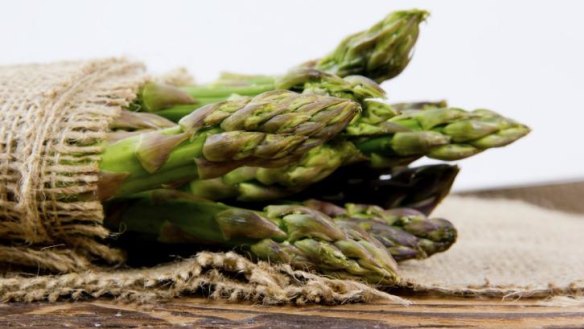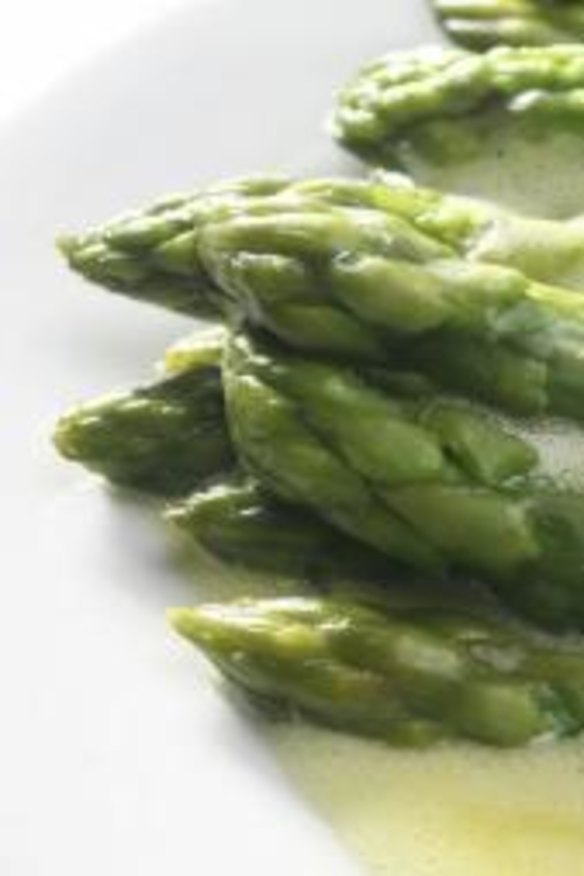Owen Pidgeon: How to grow the best asparagus in Canberra region

There are few vegetables in the world that will keep growing for 20 years, but asparagus is one such plant; its crowns can go on producing year after year. However, it is a big time investment as you will need to prepare a deep trench filled with rich soil
And it is an unusual plant in that you are seeking out the shoot tips of the new season's growth. If you are slow to harvest they will emerge from the soil and begin to shoot forth and produce long fronds.
Each plant is either male or female. The female plant will produce pretty little red berries if its spears are allowed to grow full height. Take care not to try and eat any asparagus berries as they are poisonous. The spears of the female plants tend to be thinner and woodier than the male plant's spears. The thicker spears of the male plant are the most tender. Make sure that you keep the plants well watered over the hot summer weeks and keep well weeded to prevent competition for the available nutrients and moisture.

Growing your own asparagus will give you the best outcome at dinner time because asparagus spears are sweetest when eaten as fresh as possible, ideally on the day they are harvested. Treat them like flowers and place them upright in a jug of water as soon as they are picked. You can harvest from mature asparagus plants for close to two months, from early October.
To cook, simply steam your asparagus. Avoid overcooking. Serve hot with a dollop of butter on each spear.
In Australia we have become more used to the green asparagus tips in the supermarkets. However, as a young lad living near the riverside asparagus farms of Cowra, you would see the draft horses waiting patiently between the hilled up rows of asparagus, with pickers using a flat bladed knife to chisel off the white spears from underneath the surface of the beds. However, the underground growing conditions do promote more woody fibres in the spear so you are forfeiting one benefit for another. The most lusciously tender shoots are the short, green tips emerging from a healthy bank of soil.
White asparagus is simply produced by keeping the growing tips fully covered with soil until harvest time. Lack of sunlight means that the plant does not produce the chlorophyll to turn the spears green. You will need plenty of good soil to do this as the mounded row will need to be 40-50cm high. People who have grown up in European countries will have fond memories of the white asparagus spears being cooked for not only dinner but also as a breakfast or lunchtime treat.
There are two ways to grow asparagus, one by dividing crowns, the other from seed. I have always taken the crown division approach but some horticulturalists do observe that the two-to-three year waiting time applies to both methods. Seedlings grown by home gardeners, planted in late spring, will grow vigorously but will take three years to reach full size. A transplanted crown takes a similar length of time to "recuperate" from the dissection, grow out more roots and produce a bountiful new crop. Feed regularly with liquid fertilisers during the first growing season.
Should you have a well established crop of plants and you wish to divide, then take an hour so to renew your own garden rather than simply going to the local garden centre. Asparagus plants produce huge masses of thick, soft tuberous roots which spread out in all directions. Carefully clean away by hand as much soil as possible around your existing plant. Then use a garden fork to go deep below the root ball and gently prise out the big bundle of roots.
The more roots that can be extracted, the lower the level of transplanting stress. Sometimes the bundle will be as big as a soccer ball. You will usually be able to see where the plant crowns can be divided off naturally. Select only healthy crowns. Gently break them apart and plant into your new bed. Make sure you do not allow the divisions to dry out before replanting. .
Prepare your new asparagus garden bed by preparing trench rows, opening up the soil to a depth of 30 centimetres and width of 25 centimetres. Form up a small mound about five centimetres high along the middle of the trench, on which you will place the crowns. Spread out the root network on both sides of the little mound. Take asparagus crowns and plant them 30-35 centimetres apart. Back cover with plenty of soil and place a marker to remind you where the row is hidden.
As the stems of the plants grow, build up the hill. Keep adding compost and some organic long-life fertilisers each autumn and in early spring to nurture stem growth. At the end of autumn, the foliage of asparagus will die off. When the foliage looks straw-like, cut back at ground level.
Asparagus with hollandaise sauce
20 asparagus spears
1 tbsp sea salt
hollandaise sauce
3 egg yolks
2 tsp lemon juice
100g unsalted butter, cubed
salt and pepper
Remove the woody ends from the asparagus. Bring water to the boil in a deep saucepan. Place the spears in the water and simmer for four minutes, until tender. Remove and cool the spears with cold water.
Preparing the hollandaise sauce
Place the egg yolks and lemon juice in a heatproof bowl, and sit over a medium saucepan filled with water. Heat gently and whisk continuously for three minutes. Add in the cubes of butter slowly, one at a time, whisking until melted. Remove from the heat when the sauce thickens (do not overcook). Season with salt and pepper.
Arrange four or five asparagus spears on each plate and spoon the hollandaise sauce over the spears.
This week in the garden
* Plant out rocket, spinach and winter lettuces for early spring home supplies. You can transplant seedlings of silverbeet and spinach into beds that can be provided with some shelter.
* Where you have some fallow beds, consider planting a crop of shelling peas or broad beans to build up the soil over winter. If you have enough other legumes growing then these crops can be dug back in as a green manure crop in early spring.
* Now is the time to plant out globe and Jerusalem artichokes.
* Enjoy the bright sunny days with no wind by undertaking needed pruning of fruit trees and berry canes.
Owen Pidgeon runs the Loriendale Organic Orchard near Hall.
Restaurant reviews, news and the hottest openings served to your inbox.
Sign up